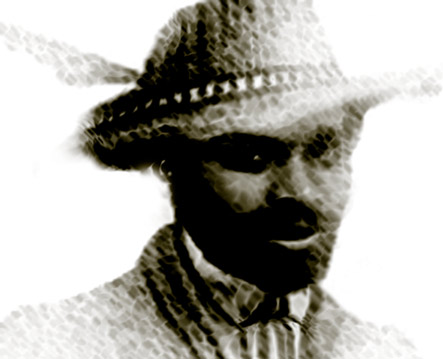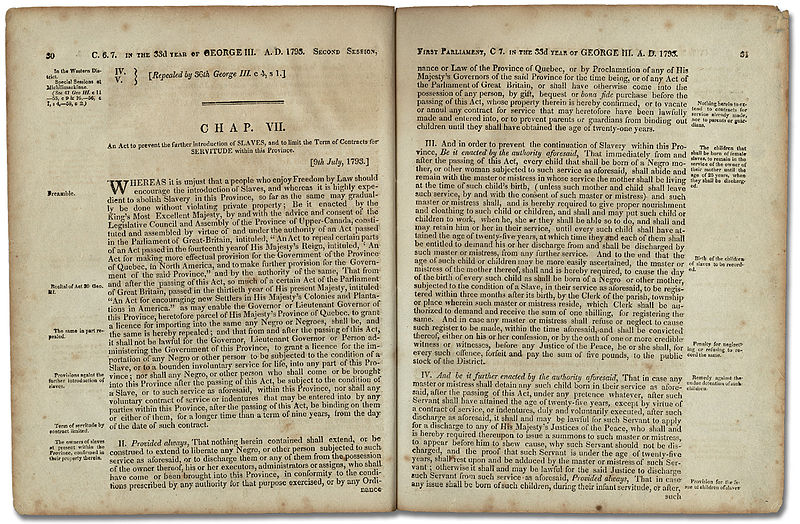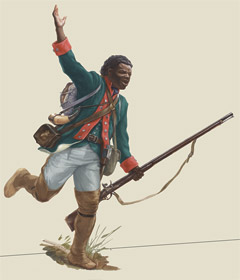Significant events in Black history in Canada
Since 1996, the Government of Canada’s annual Black History Month campaign encourages all Canadians to learn more about Black history in Canada. Below are highlights of significant events that have contributed to the story of Black communities in Canada, and the impact that they have made to all parts of society well before the land we live on was even called Canada.
1600s

The first person of African heritage known to have come to what is now Canada arrived over 400 years ago. In 1604, Mathieu Da Costa arrived with the French explorers Pierre Du Gua De Monts and Samuel de Champlain. Da Costa, a multilingual interpreter who spoke English, French, Dutch, Portuguese, and Pidgin Basque, provided an invaluable link with the Mik’maq people encountered by the Europeans.
In 1628, Olivier LeJeune was recorded as the first enslaved African to live in Canada (i.e. New France). Olivier LeJeune’s birth name is not known, as he was taken from Africa as a young child and eventually given the last name of the priest who purchased him.
In May 1689, following complaints about labour shortages in New France, King Louis XIV of France gave permission for the colonists to enslave Pawnee Native Americans and Africans.
1700s
Between 1749 and 1782, most of the people of African descent brought to Nova Scotia were enslaved by English or American settlers. In 1750, there were about 400 enslaved and 17 free Black people living in Halifax, Nova Scotia. Although the system of slavery did expand in this period, by 1767 there were also 104 free Black persons living in Nova Scotia (which included present-day New Brunswick and Prince Edward Island). In 1760, during the Seven Years’ War between Britain and France, the Articles of Capitulation, which ceded New France to Britain, permitted that Black and Pawnees would remain enslaved.
During the War of American Independence (1775-1783), the British offered freedom to enslaved Africans in America who joined the British side during the war. Many saw this as an opportunity for freedom, and eventually 10 percent of the United Empire Loyalists coming into the Maritimes were Black. The Black Loyalists founded settlements throughout Nova Scotia. The largest was at Birchtown, near Shelburne, and other settlements were Brindley (Brinley) Town (near Digby), Preston (Guysborough County), Southville (Digby County), Birchtown (Princedale–Virginia East–Graywood region, Annapolis County), and Old Tracadie Road (Guysborough County). The Black Loyalists faced discrimination and were given considerably smaller plots of land, fewer provisions, and were expected to work for lower wages. Due to the conditions that they faced, in 1790 about 1,200 Black Loyalists accepted the offer of the Sierra Leone Company (a British anti-slavery organization) to resettle in Sierra Leone, on the Atlantic coast of West Africa.

In 1793, the anti-slavery movement was emboldened by the actions of Chloe Cooley, an enslaved African woman in Upper Canada (now Ontario) who resisted being transported and sold into the United States. John Graves Simcoe, Lieutenant Governor of Upper Canada, who supported abolition before coming to Canada, had heard about Cooley’s case. He introduced a law titled An Act to Prevent the further Introduction of Slaves and to limit the Term of Contracts for Servitude. This law freed enslaved people aged 25 and over and made it illegal to bring enslaved people into Upper Canada. The introduction of this Act in Upper Canada and court decisions in Nova Scotia in the 1790s contributed greatly to a decline of African enslavement in Canada and made Canada a destination for those seeking freedom and an important base for the abolitionist movement.
1800s

Throughout the 1800’s, a number of historic Black communities were established across Canada. Some of these communities came as a result of war. Between 1800 and 1865, approximately 30,000 Black people came to Canada via the Underground Railroad – the network of secret routes and safe houses used by enslaved Africans to escape into free American states and Canada with the support of abolitionists and their allies.
In 1807, the Act on the Abolition of the Slave Trade in the British Empire received Royal Assent and became law throughout the British Empire.
During the War of 1812, many Black Canadians and their communities sided with the British Empire. The Coloured Corps was inaugurated in Upper Canada (Ontario), comprised of free and enslaved Black men who fought in the Battle of Queenston Heights. In 1815, Black veterans of the War of 1812 received grants of land in Oro Township; however much of the land was not suited to agriculture and many of those who received grants found they had to seek out employment in other places. Other communities such as Amherstburg, Chatham, London, Woolwich and Windsor, Owen Sound and Toronto also grew in this period.
Nova Scotia’s Black communities were also reinvigorated during and after the War of 1812. Following a British offer to those who deserted the Americans, some 2,400 Black peoples from Georgia and the Chesapeake region of the United States either served in the British military or supported the war effort. After the war, the “Black Refugees” settled at Preston, Hammonds Plains, Beechville (‘Refugee Hill’), Five Mile Plains, Beaverbank, Prospect Road, Halifax, Dartmouth, and elsewhere. By 1834, the Black Refugees had created communities with African Baptist churches as well as societies such as the African Friendly Society and the African Abolition Society.
In 1833, the Act on the Abolition of Slavery in the British Empire, abolished enslavement in most British colonies, including Canada.
In the early 1850’s, 2 important abolitionist newspapers were founded in Canada to support the global anti-slavery movement:
- The Voice of the Fugitive was established in 1851 by Mary and Henry Bibb in Windsor, Ontario and reported on the Underground Railroad.
- The Provincial Freeman, which was published out of Toronto and later Chatham, was founded by Mary Ann and Isaac Shadd in 1853 - making Mary Ann Shadd the first Black woman in North America to own and publish a newspaper.
In 1858, nearly 800 free Black peoples left the oppressive racial conditions of San Francisco for a new life on Vancouver Island. Though still faced with intense discrimination, these pioneers enriched the political, religious and economic life of the colony. About 400 Black Californian families moved to Victoria or Salt Spring Island before the start of the gold rush.
By 1879, significant numbers of Black communities started immigrating to Alberta from Oklahoma, as they had been unable to find equality despite being experienced farmers and were increasingly alarmed by a series of Ku Klux Klan lynchings. In Canada, however, they had to contend with attempts to prevent Black immigration.
As Canada moved toward into the 20th century, many of the Black communities founded before and just after Confederation initiated organizations and institutions that fostered their unique Canadian identities. This paved the way during the 1900s for additional communities and organizations to develop across Canada as immigration policies that had discriminated against people of African and Caribbean descent, amongst others, were abolished or reformed.
1900s
In the first half of the 20th century, many Black Canadians resisted the practice of segregation. This led to the appearance of formal protection from racist education, employment, and housing restrictions in the 1950s and 1960s when some provinces passed laws imposing fair employment practices and created bills of rights and the first human rights commissions.
In 1946, Halifax businesswoman Viola Desmond confronted the racism that African Nova Scotians routinely faced when she refused to move from her seat in the “whites-only” section of Roseland theatre. Her activism paved the way for the civil rights movement in Canada. In 2018, Viola Desmond became the first Black person and the first Canadian woman to be featured on a regularly circulating Canadian banknote, when she was featured on the $10 bill.
In 1958, Willie O'Ree, born in Fredericton, New Brunswick, broke the color barrier in the National Hockey League (NHL) when he played for the Boston Bruins. He is widely recognized for being the first black player in the National Hockey League and celebrated for his role in promoting diversity in hockey.
In 1968, Lincoln Alexander became the first Black Member of Parliament in the House of Commons. Later, he also served as the Lieutenant Governor of Ontario from 1985 to 1991, becoming the first Black person to hold a vice-regal position in Canada. The Government of Canada announced in 2023 that Lincoln Alexander will be featured prominently on the $20 bill.
2000s
The first quarter of the 21st century has seen the emergence of modern social movements and Black activism using social media and including more intersectional identities in the struggle for racial justice in Canada. In addition, the last couple of decades have seen more celebration of Black history, Black resilience, and Black presence in Canada.
Michaëlle Jean, social activist, journalist and documentary filmmaker, served as the Governor General of Canada from 2005 to 2010. Her appointment was historic, as the first Black person to hold this position in Canada.
In February 2008, Senator Donald Oliver, the first Black man appointed to the Senate, introduced the Motion to Recognize Contributions of Black Canadians and February as Black History Month.
In 2015, the United Nations proclaimed the International Decade for People of African Descent (2015-2024). In proclaiming this Decade, the international community is recognizing that people of African descent represent a distinct group whose human rights must be promoted and protected. Around 200 million people identifying themselves as being of African descent live in the Americas. Many millions more live in other parts of the world, outside of the African continent. On February 7, 2024, the Prime Minister announced an extension, until 2028, of the federal government’s efforts. The United Nations proclaimed a Second International Decade for People of African Descent on December 17, 2024 to renew the call for recognition, justice, and development of people of African descent.
While the Black Lives Matter (BLM) movement began as a hashtag following the fatal shooting of unarmed teenager Trayvon Martin and the ensuing 2013 court case, it soon became a rallying statement to protest anti-Black racism and police violence faced by Black people. Five Canadian BLM chapters emerged between 2014 and 2020. The movement gained significant momentum in 2020, following the killing of George Floyd in the United States. In some of the most extensive, widespread, and diverse mobilizations of ordinary Canadians, people across Canada participated in protests and demonstrations, calling for systemic change. These protests led to a change in the conversation on anti-Black racism in Canada.
On October 3, 2023, Members of the House of Commons elected the Honourable Greg Fergus as the 38th speaker of the House of Commons.
Mr. Fergus has been serving the people of Hull–Aylmer in Parliament since October 2015. At the time of his election as Speaker, he was the Parliamentary Secretary to the President of the Treasury Board and to the Minister of Health.
He co-founded and co-chaired the Parliamentary Black Caucus for six years.
These 21st century events reflect the ongoing efforts to acknowledge, preserve, and celebrate the diverse contributions of Black Canadians to the fabric of the nation. Black History Month continues to play a crucial role in fostering awareness and understanding of this rich heritage.
Over the course of the last centuries, people of African and Caribbean descent have shaped their own identities in Canada while making important contributions to Canadian society. We invite you to take the opportunity Black History Month provides to learn more on these histories and heritages and to find ways to make it part of Canadian identity throughout the year.